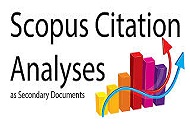Analisis Pembuatan Media Pembelajaran dalam Mata Kuliah Pendidikan Multimedia oleh Mahasiswa Program Studi Teknologi Pendidikan IKIP Mataram
DOI:
https://doi.org/10.33394/jk.v4i2.1133Keywords:
Media Pembelajaran, MultimediaAbstract
Abstract: The purpose of this study is to determine the extent to which the ability of higher students in making
learning media that is feasible used in the learning process. This study used descriptive quantitative research
methods. Data collection techniques used was observation, and questionnaires. The technique of analyzing the data was based on the feasibility criteria of the learning media, namely the aspects of coloring, aspects of the use of words and languages, aspects of the display on the screen, aspects of presentation, aspects of animation and sound. Based on the results of the feasibility test by media experts for the manufacture of learning media by students in multimedia education courses in the Education Technology study program, the percentage gain for each aspect was 57% Coloring, 55% Word and Language aspects, 58% Display aspects, Presentation aspects 57%, Animation and Sound aspects 56%, which meant the learning media made by higher students was in the Worthy category to be used in the learning process. Meanwhile, for the feasibility test of the material experts had 3 aspects, namely the aspect of Feasibility of Content, Feasibility aspect of Presentation, Contextual aspect. The results of the feasibility analysis by material experts showed that percentages for each aspect, namely the aspect of Feasibility of Content 99%, Feasibility aspect of Presentation 87%, and Contextual aspect 88%, where all aspects in the category were Very Worthy. This can be seen from the compatibility between the media made in accordance with the utilization and learning objectives. So, it can be concluded that higher students have the appropriate ability in making learning media to be used in the learning process.
Â
Abstrak: Tujuan penelitian ini yaitu untuk mengetahui sejauh mana kemampuan mahasiswa dalam pembuatan media pembelajaran yang layak digunnakan dalam proses pembelajaran. Penelitian ini menggunakan metode penelitian deskriptif kuantitatif. Teknik pengumpulan data yang digunakan adalah observasi, dan angket. Teknik analisis data berdasarkan kriteria kelayakan media pembelajaran, yaitu aspek Pewarnaan, aspek Pemakaian Kata dan Bahasa, aspek Tampilan pada Layar, aspek Penyajian, aspek Animasi dan Suara. Berdasarkan hasil uji kelayakan oleh ahli media untuk pembuatan media pembelajaran oleh Mahasiswa pada mata kuliah pendidikan multimedia di program studi Teknologi Pendidikan, perolehan persentase untuk setiap aspek yaitu aspek Pewarnaan 57 %, aspek Pemakaian Kata dan Bahasa 55 %, aspek Tampilan pada Layar 58 %, aspek Penyajian 57 %, aspek Animasi dan Suara 56 % yang artinya media pembelajaran yang dibuat oleh Mahasiswa dalam kategori Layak untuk digunakan dalam proses pembelajaran. Sedangkan untuk uji kelayakan ahli materi memiliki 3 aspek, yaitu aspek Kelayakan Isi, aspek Kelayakan Penyajian, aspek Kontekstual. Hasil analisis kelayakan oleh ahli materi diperoleh persentase untuk masing-masing aspek yaitu, aspek Kelayakan Isi 99 %, aspek Kelayakan Penyajian 87 %, dan aspek Kontekstual 88 %, dimana semua aspek dalam kategori
Sangat Layak. Hal ini dapat dilihat dari kesesuaian antara media yang dibuat sesuai dengan pemanfaatan dan tujuan pembelajaran. sehingga hal ini dapat disimpulkan bahwa Mahasiswa memiliki kemampuan yang layak dalam pembuatan media pembelajaran untuk digunakan dalam proses pembelajaran.
References
Abidin, Z. (2003). Media dan Media Pembelajaran. Jakarta: PT. Raja
Grafindo Persada
Azhar, A. (2013). Media Pembelajaran. Jakarta: PT. Raja Grafindo Persada.
Hasan, H. S. (2008). Evaluasi Kurikulum. Bandung: Remaja Rosda
Karya Miarso, Y. (2009). Menyemai Benih Teknologi Pendidikan.
Jakarta: Kencana Prenada Media Group.
Sugiyono. (2010). Statistik untuk Penelitian. Bandung: Alfabeta
Suharsimi, A & Jabar. (2010). Evaluasi Program Pendidikan.
Jakarta: Bhineka Aksara
Sumiati & Asra. (2008). Metode Pembelajaran. Bandung: CV Wacana Prima.
Usman. (2007). Metodologi Penelitian Sosial. Jakarta: Bumi Aksras.
Downloads
Published
How to Cite
Issue
Section
Citation Check
License
License and Publishing AgreementIn submitting the manuscript to the journal, the authors certify that:
- They are authorized by their co-authors to enter into these arrangements.
- The work described has not been formally published before, except in the form of an abstract or as part of a published lecture, review, thesis, or overlay journal.
- That it is not under consideration for publication elsewhere,
- That its publication has been approved by all the author(s) and by the responsible authorities – tacitly or explicitly – of the institutes where the work has been carried out.
- They secure the right to reproduce any material that has already been published or copyrighted elsewhere.
- They agree to the following license and publishing agreement.
Authors who publish with JK agree to the following terms:
- Authors retain copyright and grant the journal right of first publication with the work simultaneously licensed under a Creative Commons Attribution License (CC BY-SA 4.0) that allows others to share the work with an acknowledgment of the work's authorship and initial publication in this journal.Â
- Authors are able to enter into separate, additional contractual arrangements for the non-exclusive distribution of the journal's published version of the work (e.g., post it to an institutional repository or publish it in a book), with an acknowledgment of its initial publication in this journal.
- Authors are permitted and encouraged to post their work online (e.g., in institutional repositories or on their website) prior to and during the submission process, as it can lead to productive exchanges, as well as earlier and greater citation of published work.
- Open Data Commons Attribution License, http://www.opendatacommons.org/licenses/by/1.0/ (default)

This work is licensed under a Creative Commons Attribution-ShareAlike 4.0 International License.








